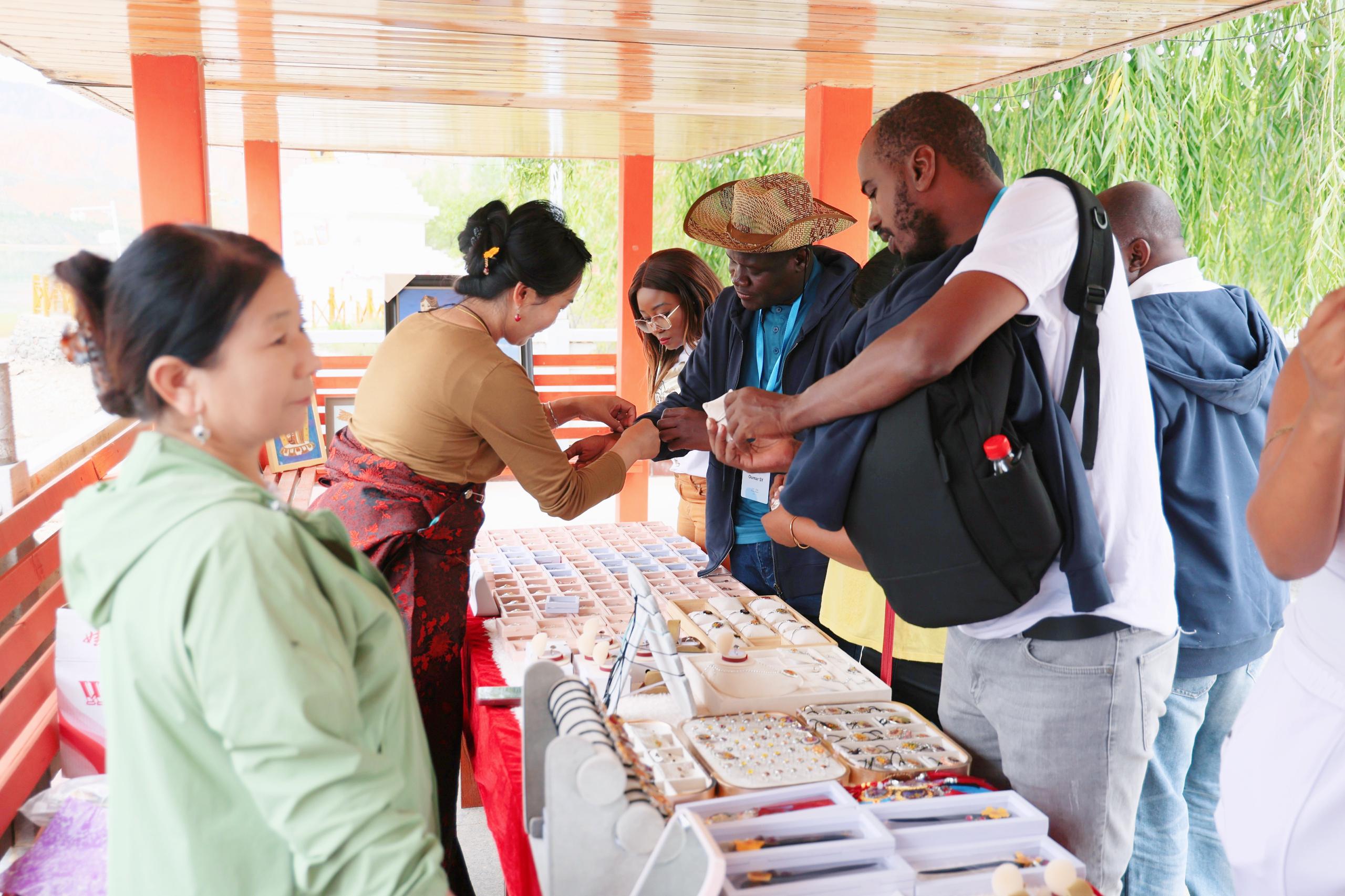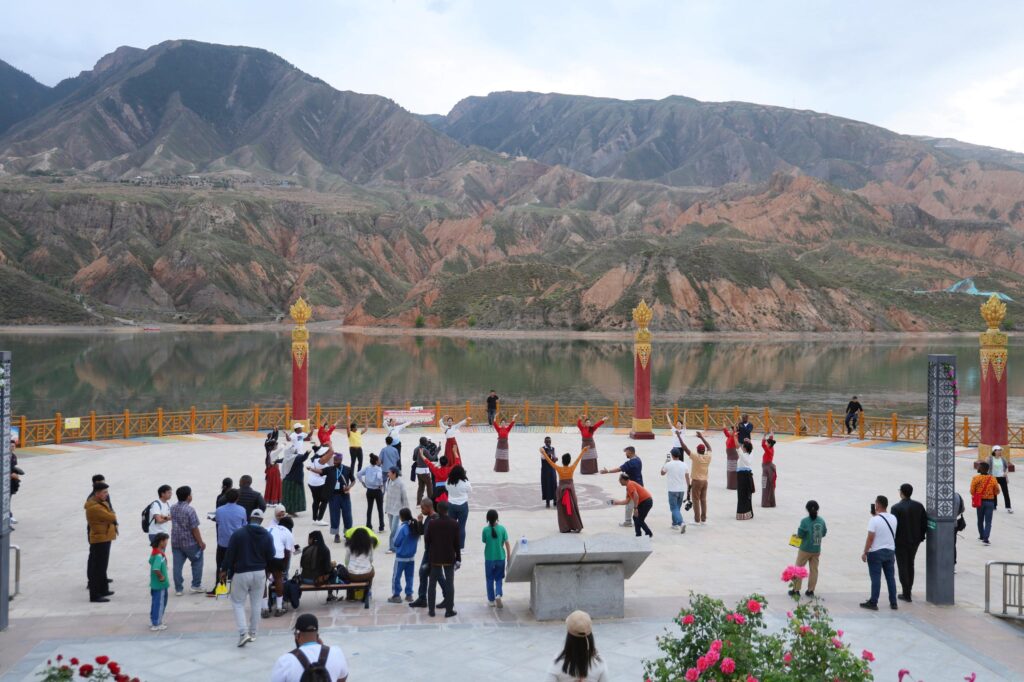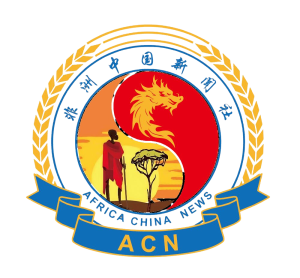
By Sarafina Christopher
On the rugged edge of the Tibetan Plateau lies Deji Village in Qinghai Province, once a place where poverty seemed almost permanent. Harsh winters, scarce farmland, and limited access to education or healthcare made survival a daily struggle.
Yet today, Deji stands as a living testament to resilience, where families have traded despair for dignity, and children now run through schoolyards that once seemed like distant dreams.
The transformation of Deji Village tells the story of China’s 75-year journey from widespread deprivation to modernisation.
In 2020, China officially declared the eradication of extreme poverty, lifting more than 800 million people out of hardship, the largest poverty reduction achievement in human history.
But behind those statistics are villages like Deji, where lives were transformed through deliberate policy, innovation, and the determination of ordinary people.

Qinghai Province, where Deji is located, was one of the most challenging frontiers of this battle. Known for its high-altitude terrain and fragile ecosystems, the province once ranked among China’s poorest regions.
The government launched targeted poverty alleviation programmes that combined ecological conservation with livelihood opportunities.
Families were relocated from uninhabitable mountain areas to new settlements with housing, healthcare, and schools. Local industries from yak dairy processing to eco-tourism and Thangka art were introduced to ensure sustainable incomes.
“We used to survive on what little barley we could grow. Winters were hard, and many families left in search of work,” recalled a villager who now manages a cooperative producing yak cheese.
“But today, our children study in modern classrooms, and we earn enough to save for the future. Life feels secure.”
Another villager, a carpenter, expressed joy at how his family has moved from struggling to living in comfort while also training others in carpentry.
“Poverty reduction here in Deji has now become a holistic project not just raising incomes, but revitalising communities,” he said.
Mr Wang Xuejun, Deputy Director of Qinghai’s Department of Agriculture and Rural Affairs, explained that Qinghai has been a testing ground for China’s rural revitalisation.
Over the past decade, guided by the vision of President Xi Jinping, Qinghai has advanced what he called the “five revitalisations”: industry, talent, culture, ecology, and community organisation. These efforts have transformed the plateau into a land of opportunity, resilience, and hope.
He shared three stories that illustrate this journey. The first is about a family once identified as at risk of falling back into poverty.
Through medical support, educational subsidies, and relocation programmes, they secured stability and opportunity.
Their story reflects thousands of others across Qinghai, showing that rural revitalisation is about people first, not just policies.
The second comes from Gonghe County, where barren desert land was transformed into “photovoltaic pastures.” Solar panels now produce clean energy, while grass grows beneath them to support grazing.
Herds of “photovoltaic sheep” combine renewable energy, ecological restoration, and improved family incomes.
The third is about Li Dong, a first secretary stationed in Huangyuan County.
He helped villagers start a canvas bag cooperative, creating jobs for women who once had limited opportunities.
“Within two years, the small initiative grew into a thriving enterprise, paying wages, generating taxes, and even sharing dividends with the entire village,” Wang noted.
Beyond these examples, Qinghai has developed industries ranging from organic yak and sheep farming to cold-water fish and vegetables. It has promoted traditional culture such as Thangka art, turning it into a source of livelihood for thousands. Even something as simple as noodles has become an industry that feeds families and builds pride.
The lesson from Qinghai is clear: rural revitalisation is not about imposing a model, but about unlocking local strengths, empowering people, and ensuring development that is sustainable and inclusive. It is about combining tradition with innovation, and ecology with economy.
Similar lessons can be seen elsewhere in China. In Maanshan Village, Jilin Province, targeted reforms and modern farming techniques transformed a once struggling community.
Local leader Zhang Zhangang explained, “We learned to work with the land, not just on it.” Today, markets there are filled with fresh produce and handmade goods, reflecting the broader success of China’s poverty alleviation drive.
China’s achievements stand as proof of what deliberate action can accomplish. By 2020, the country eradicated extreme poverty, achieving the UN 2030 target a decade early. The per capita disposable income of rural residents in poor areas more than doubled between 2013 and 2020. Roads, electricity, safe housing, education, healthcare, and digital connectivity reached even the remotest villages.
Analysts attribute this to precision poverty alleviation strategies, strong political leadership, and mass mobilisation. More than 255,000 village work teams and over three million cadres were deployed nationwide to ensure “every household had a policy, and every person received assistance.”
Chinese modernisation, defined by people-centered development, ecological balance, and inclusivity, is framed as “modernisation for all.” President Xi Jinping describes it as a path that seeks “harmony between humanity and nature, prosperity for all, and peace as a shared value.”
For developing nations like Nigeria, this model holds valuable lessons. With its vast rural population and recurring farmer-herder conflicts, Nigeria can benefit from integrated policies that strengthen livelihoods while fostering peace. As one Nigerian youth observer noted, “The villages model highlights the value of building policies around people, not just infrastructure.”
China has also shared its poverty reduction experience with the world through the International Poverty Reduction Center in Beijing, Belt and Road projects, agricultural technology transfers, and vocational training programmes.
In Africa, including Nigeria, Chinese cooperation in infrastructure, rural electrification, and the digital economy continues to shape development strategies.
In conclusion , China’s 75 years of poverty reduction stand not only as a national milestone but also as a global resource for building a fairer, more sustainable future. Its story from Deji Village to nationwide modernisation proves that poverty eradication is achievable when people are placed at the centre of development.



